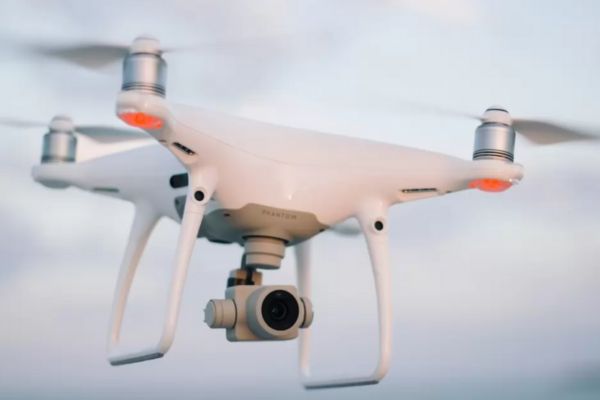The recent allocation of Rs 57 crore for drone technology and components under the production-linked incentive (PLI) scheme in the interim budget 2024 is a milestone towards leveraging advanced technology for various sectors. This allocation, marking a 72 percent increase from the previous year’s budget, reflects a commitment to bolstering India’s manufacturing capacity and fostering self-reliance—a key objective of the Atmanirbhar Bharat initiative. Besides, it strengthens the country’s mission of becoming the global drone hub by 2030.
Revolutionizing Infrastructure Development with Drones
Drone technology holds immense potential to revolutionize several critical sectors, including infrastructure development. Equipped with high-resolution cameras and sensors, drones offer a game-changing solution by providing accurate and timely data for planning, design, and execution. This data enables engineers and planners to make informed decisions, optimize resource allocation, and mitigate potential risks, ultimately leading to cost savings and improved project outcomes.
Enhancing Construction Monitoring
In infrastructure projects, drones play a vital role in construction monitoring. By conducting regular aerial inspections, drones can identify deviations from the original plan, monitor progress, and detect potential issues such as material shortages or safety hazards. This proactive approach allows project managers to address concerns promptly, minimize delays, and maintain quality standards, thus enhancing overall project efficiency and transparency.
Strengthening Defense Capabilities
Drones contribute to strengthening border surveillance and national security efforts in the defense sector. With their ability to cover vast areas and gather real-time intelligence, drones serve as powerful tools for monitoring border regions, detecting intrusions, and preventing illicit activities. By supplementing traditional surveillance methods with drone technology, defense agencies can enhance situational awareness, respond swiftly to threats, and safeguard territorial integrity more effectively.
Improving Disaster Response
Furthermore, drones are crucial in improving disaster response capabilities, particularly in emergencies such as natural disasters. With the help of thermal imaging cameras and sensors, drones can assess damage, identify survivors, and facilitate search and rescue operations in challenging environments. Their agility and ability to access hard-to-reach or hazardous areas make them invaluable assets for emergency responders, enabling swift and coordinated disaster relief efforts.
Boosting Agricultural Practices
Drone technology also offers a myriad of benefits for agriculture. By employing drones, farmers can monitor crop health, identify pest infestations, and optimize irrigation practices. This data-driven approach enables precision agriculture, where resources such as water and fertilizers are applied more efficiently, leading to higher yields and reduced environmental impact. In addition, drones can facilitate crop monitoring over large areas, providing farmers with valuable insights that would otherwise require a lot of time and effort if conducted manually.
Conclusion
The government’s increased allocation for drone technology underscores its recognition of the transformative potential of this advanced tool across various sectors. By leveraging drones, India can accelerate infrastructure development, enhance defense capabilities, and strengthen agricultural practices, ultimately driving economic growth, resilience, and self-reliance. As the country continues to invest in innovation and technology, the widespread adoption of drones is poised to bring about profound positive changes, positioning India as a global leader in the utilization of cutting-edge solutions for societal benefit.















